
Are You 18 Or Over?
YesOr
No By clicking yes, you certify that you are over 18. By using this website, you agree to our legal disclaimer.605+ Cannabis Strains over 20 Breeders worldwide.
Table of Contents
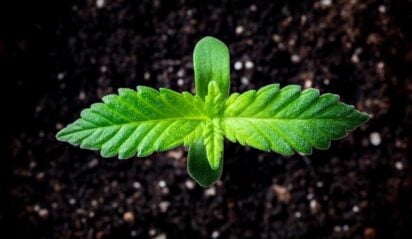
To grow marijuana plants successfully, you need to learn and understand the different cannabis growth stages. There are a total of five major stages of the growth of a cannabis plant. Some growers argue that there are only two stages: vegetative and flowering stage but when you consider how cannabis plants are cared for and how they have different requirements in specific times of growth, you can identify five stages and they are
Let’s begin by describing each cannabis growth stage and identifying the different needs of cannabis plants during these five crucial stages.
We will start discussing the seedling phase with a basic overview of a healthy, viable, and ready to grow cannabis seed. Although Cannabis Seeds all look alike, there are a few things to keep in mind:
In a regular physical and online seed bank, you will find the following types of Cannabis Seeds.
Regular seeds are also called photoperiod seeds. This means that these seeds will grow into photoperiod plants that rely on light or the amount of light available to start flowering. We will discuss this when we get to the pre-flowering phase.
Aside from relying on light, regular seeds are asexual. You cannot tell if you’re growing male or female plants. This is why most people growing photoperiod plants sow more seeds than what they need to make way for male plants.
Autoflowering seeds will grow automatic plants and these are what their name says. These flowers automatically without the need for a special growing light schedule. Autos also flower fast in as soon as 7 to 9 weeks. This means that you can grow plants twice or even thrice a year.
Feminized seeds will grow all female plants. These will still need special lighting to stimulate flowering.
Most autoflowering plants are feminized. This means that your plants will flower automatically without the need for a special lighting schedule. These are also all female plants so you don’t need to worry about growing male plants that can accidentally pollinate female plants.
High THC seeds will grow plants rich in THC (tetrahydrocannabinol) which is the psychoactive compound of cannabis.
High CBD seeds will grow plants that have high levels of CBD (Cannabidiol) , the therapeutic cannabinoid of cannabis. Take note, plants with high CBD will have lower THC and vice versa.
Sativa seeds will grow sativa plants. This could be any sativa-dominant or pure sativa plant.
Indica seeds will grow indica plants. Again, this may be an indica-dominant or a pure indica strain.
Hybrid seeds will grow into hybrid plants. Hybrids come with mixed genetics, sativa = indica content. Hybrid plants will have the growing characteristics and plant qualities of a sativa or indica strain.
Fast version seeds that will grow into plants with very short life spans as their flowering stages have been shortened.
Medical seeds are seeds that will grow medical cannabis plants with high CBD content and hence will help treat different medical conditions like pain, stress, and anxiety.
Landrace seeds will grow into landrace plants. These are strains commonly used in breeding because of their very stable characteristics.
As we have said before, it’s impossible to identify male from female Cannabis Seeds unless you have feminized seeds. But why is this very important?
The only time you’ll find out the gender of your plants is during the pre-flowering phase and this is a long way to go from the seedling phase! It’s important to do this especially when you’re growing cannabis for weed.
If you let male plants in your garden, you will end up ruining your hard work as these will only pollinate your females and grow seeds. As you can see, it’s more efficient to use feminized seeds so you’d know you’re growing only female plants.
After you’ve decided which type of seed you intend to grow, the next phase is to germinate your seeds. And to make sure that your seeds will sprout without any problems, consider testing for their viability. Here are some ways to do it.
Now that you picked the viable seeds from the non-viable seeds, it’s time to germinate them. The most common way to germinate Cannabis Seeds is by the moist paper towel technique. This technique is very easy to grow and is recommended by most growers and seed banks.
You will place seeds in between moist pieces of paper towels. Place these inside a plate and cover it. You will only open the plate to moisten the paper towels once or twice a day.
After two or three days (some seeds can take up to 5 days), you will notice the seeds are open with the taproot emerging from inside the seeds. The taproot is the first structure that emerges from a germinated seed. This structure is vital to a plant’s survival as it will dig through the ground or soil and will grow more roots. Never touch the taproot because this can easily break off and stress your plants.
Once this happens, the newly sprouted seeds will open up completely to allow the first leaves of the plant to sprout out. This is the best time to transfer your young plants to your preferred growing medium (soil, hydroponics, or other inert growing material). You may also transfer the newly sprouted plants in a peat pellet and then transfer them to soil or the ground. Make sure that the soil you’re using is healthy and will support your plants’ growth with the right nutrients.
The very first leaves are the cotyledons from the seed and are round and don’t resemble cannabis leaves at all. The cotyledons are raised high towards the sun like solar panels and these will absorb all the light to produce food and to grow new leaves.
After the cotyledons, the seed will soon be able to create the plant’s very first leaves. First, there will be a pair of leaves with three lobes. Next, a pair with five lobes, the seven lobes. The leaves with seven lobes now resemble regular marijuana leaves with usually serrated edges.
The main trunk of the seedling will grow taller and taller. In the ground, the roots are growing and spreading, helping the plant anchor itself on the ground. The roots are also deeper and further searching for water and nutrients.
Usually, after germination and the seedlings have sprouted two sets of lobed leaves and the roots are already developed, you may now transfer seedlings in your preferred growing medium (soil or hydro). But you may still start everything in the soil.
Seedlings should be transferred to a final big pot and not another small pot. A big pot has more room, even room for a mature plant and this is why we recommend 5-gallon containers as final pots.
Also, the right soil is needed and we recommend organic soil available in most garden supplies shops and cannabis growing supplies stores. If you have healthy sandy-loamy soil then this will do as well. This type of soil can absorb nutrients and water very well and will drain these easily. Sandy loamy soil is also well-aerated so fresh oxygen can move through the soil and benefit the roots.
Transfer seedlings carefully and never touch the roots because this can stress your plants.
Marijuana seedlings are small sturdy plants. The main trunk is not lanky or stretchy and new leaves are equally spaced, green, or light green. These seedlings will grow new leaves almost daily and will also grow taller and wider depending on the strain.
Cannabis seedlings need the following to survive and to stay healthy.
During the vegetative stage, your plants will grow dramatically. You’ll notice vertical and horizontal growth with new leaves growing almost every day. Depending on the strain, your plants can grow taller or denser.
Most growers consider the vegetative stage as the most crucial as this is when you must give your plants the most care. The vegging phase builds the foundation for buds to grow and larger and denser buds need strong stems and roots.
Whether you’re growing cannabis indoors or outdoors, your main concern at this point is to protect your plants from environmental changes (temperature, humidity, and air circulation) because even the slightest change can make a difference in the growth of your plants.
Also, don’t let your guard down since any of the following may happen:
Some growers trim or prune their plants as early as the first weeks of the vegetative stage to promote better growth and bud formation. We recommend this but not for beginner growers.
Healthy growing cannabis plants are plants that look lively, growing new leaves and stems. These plants are upright or supported by posts or trellises if the plant is too tall. A healthy plant has strong stems, “drinks” water, and fertilizer without any problems, and is free from pests and molds.
Vegging cannabis plants need the following:
The pre-flowering phase is a much-awaited stage of growth for people who are growing photoperiod or regular strains. This is because it’s when you can finally identify the gender of your plants. This stage lasts for a while; most growers don’t even recognize this as a phase of a cannabis plant’s growth but merely the beginning of the glorious flowering stage.
But for photoperiod plants, you need to set the stage for the pre-flowering. As soon as your plants are the right height and size, with a healthy disposition, growing new leaves almost every day and have no problems like pests or molds, you may now flip the switch to move to the flowering phase. To flip the switch, photoperiod plants must be exposed to a special lighting schedule with 12-hour light and 12-hour darkness periods. This mimics how nature does it as plants can determine if it is not getting enough light which means that colder days are ahead.
But there’s a problem with growing your cannabis plants outdoors. You need to maintain this strict schedule especially the darkness phase. Any kind of light detected by your plants at this stage may stress it out and will make it revert to the vegetative stage. Remember, cannabis plants are starting to become very sensitive when you place the plants in a 12/12 schedule. If it does not follow this, it could become stressed and will develop hermaphroditic characteristics. Your plants can end up pollinating themselves!
The best way to maintain darkness for 12-hours outdoors continuously is to use a tarp or a tent. But for indoor growers, this won’t be a problem at all. Simply turn off the lights and lock the door. You may want to use a timer switch so your lights will switch on or off automatically. No need to bother at all.
After a few days of exposing your plants to a strict 12/12 lighting schedule, the lovely pre-flowers will now form. These can be seen at the junction of the stem and main trunk. And now for the gender reveal.
Males will grow balls or sacs in this area. These structures contain pollen which can pollinate females to grow seeds. It will only take a few days before these sacs mature and crack open and pollen can be distributed by wind action to accepting females.
Meanwhile, female plants will grow white wispy flowers called pistils. These flowers also grow on the same site, the junction between the trunk and the stem. The flowers will readily accept pollen however when it does not get pollen, it will grow weed.
It’s up to you if you want to remove males to grow weed or you want males to remain to pollinate females and get seeds.
Pre-flowering cannabis plants require the following:
The flowering phase continues for females cultivated because of weed. After the pre-flowering, females will start to grow large and dense buds but the size of the buds may also depend on the type of strain and how you care for your plants.
It’s very crucial to maintain focus at this stage and provide a safe and secure environment for your plants. Many threats and problems can arise during the flowering stage. Here are just a few:
The following are very important to flowering plants:
Harvest time is the culmination of your efforts. This is the time to celebrate because soon, you’ll be able to taste your homegrown cannabis.
The harvest period depends on the strain you have. Some strains take time to harvest while some will be ready in just a few days after pre-flowering.
You need to understand when to harvest and what to check for to determine the readiness of your buds. If you harvest early, you might end up with poor potency and reduced yields. Harvest later and you may end up with very potent weed that can instantly knock you out.
You need a magnifying glass or a jeweler’s loupe to check for a few things to determine readiness. If you have an updated smartphone or digital camera, you can also use these to check for readiness.
Harvest when hairs that protrude from the flowers are now dark and are curled in. You can now see the bud from under the hairs. Harvest earlier and you will get weed with a higher mental or psychoactive effect.
Harvest when trichome heads (very small glass-like mushrooms all over the buds) turn milky white. Amber trichomes that turn to gold or darker color means that the weed has a relaxing or couch lock effect.
After harvesting, your cannabis buds and plant parts will need drying and curing before you can finally smoke them. Proper drying and curing can take more weeks but rest assured, you’ll be smoking potent and smooth weed.
Cannabis plants’ needs may vary depending on the strain. By understanding these cannabis growth stages, you’ll be growing weed like a pro no matter what recreational or medicinal cannabis strain you’re cultivating.
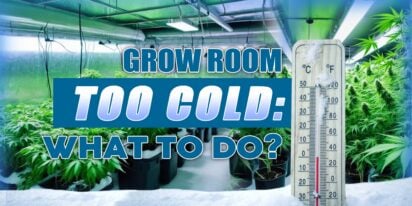
[ez-toc] In indoor gardening, maintaining an optimal temperature within your grow tent is crucial for the health and productivity of your plant

[ez-toc] Welcome to the delightful world of cannafudge crafting, where sweetness meets sophistication, and cannabis infusion adds a unique twis
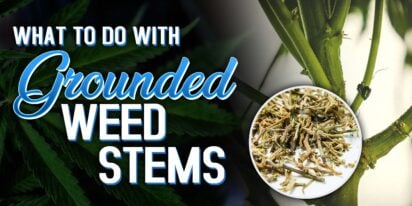
[ez-toc] You’ve finished trimming your weed, but what about those leftover stems? Don’t throw them away! These seemingly useless bits can a

Feeling high can be an exhilarating experience, but it's essential to make the most of it by engaging in activities that enhance the sensation a
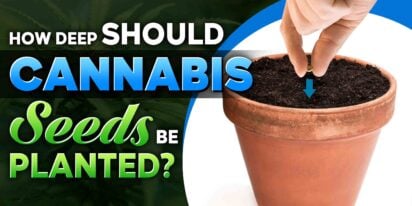
[ez-toc] Starting with planting cannabis seeds might seem simple, but how deep should cannabis seeds be planted for them to grow well. In this
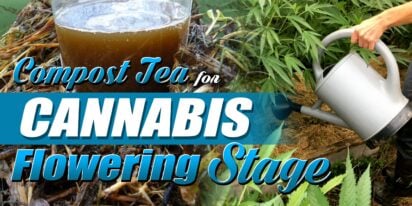
[ez-toc] In the realm of cultivating cannabis, maximizing growth during the flowering stage is a top priority for growers. While various method
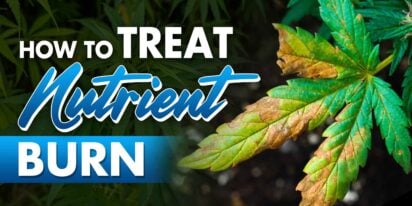
[ez-toc] Nutrient burn is a common issue among plant enthusiasts, often resulting from over-fertilization or improper nutrient application. It

[ez-toc] Welcome to our complete guide to dealing with harmful pathogenic mold in cannabis. For those who grow cannabis, preventing mold is vit

In recent years, there has been speculation about “did Shakespeare smoke weed?” This idea originates from a study by South African anthropol
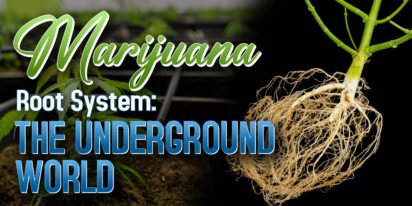
[ez-toc] Welcome to the hidden world beneath the soil – the inside of the marijuana root system. While the vibrant leaves and resinous flower

Are You 18 Or Over?
YesOr
No By clicking yes, you certify that you are over 18. By using this website, you agree to our legal disclaimer.